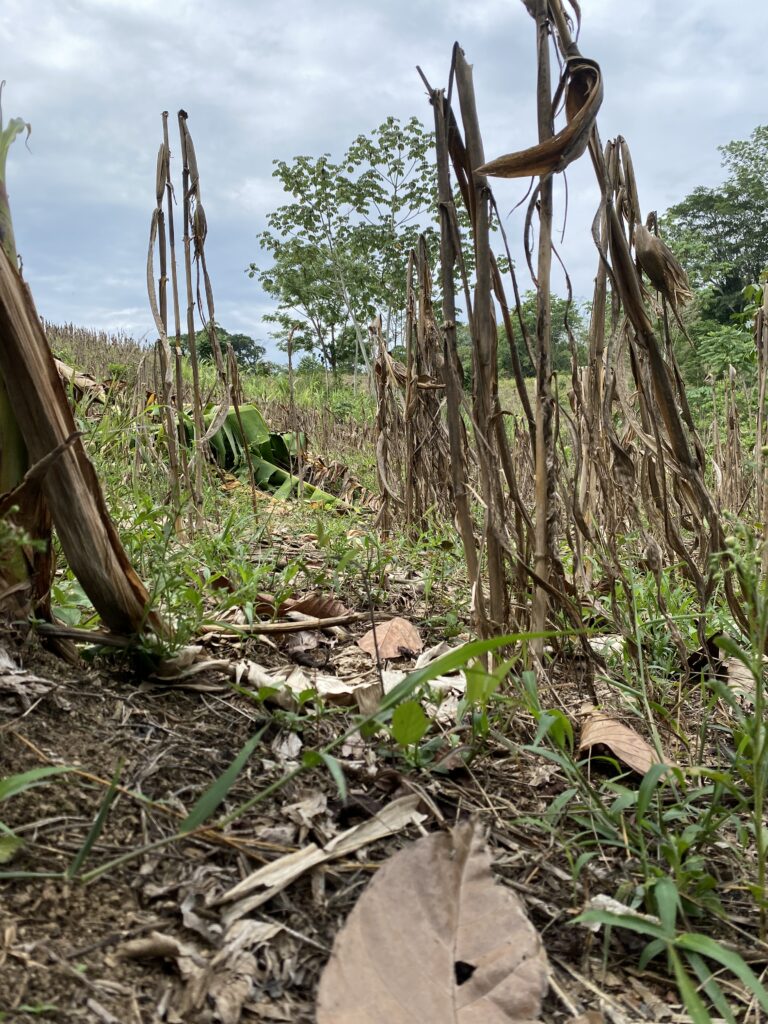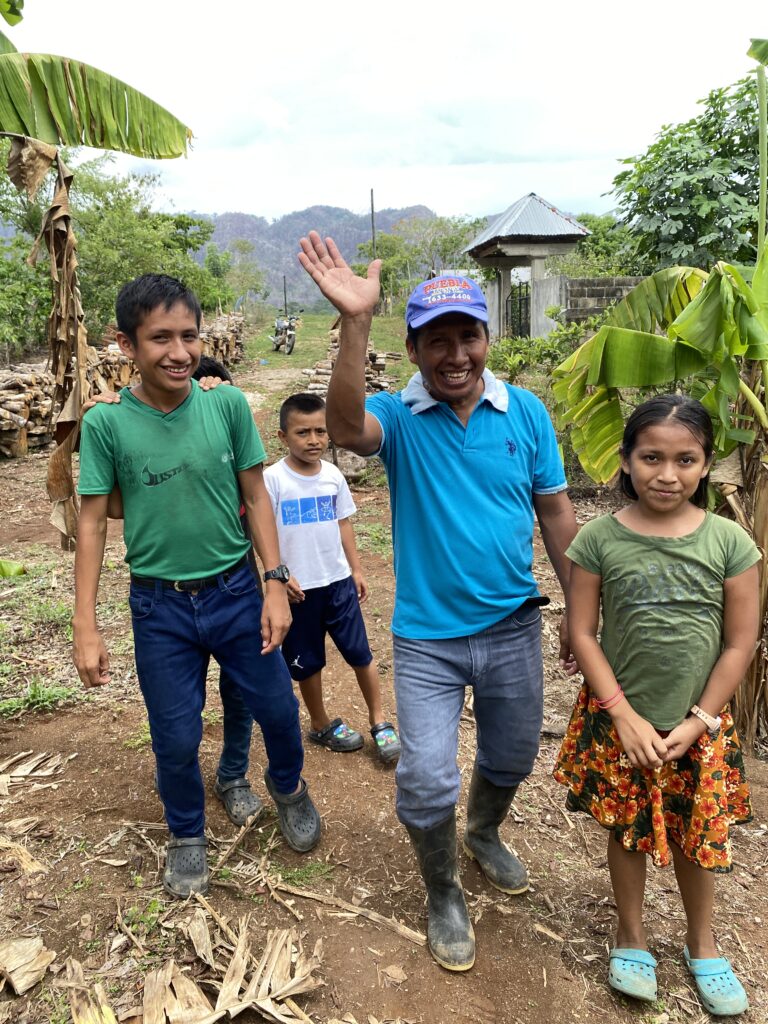By Dabney Gomes
It was already late morning when we pulled onto the dirt road leading into the village. My throat constricted as I saw the familiar scene: the church gate thrown open in welcome, everyone gathered outside, and the band in full swing. Marcus and Pantaleon were lighting the cannon, letting anyone not already there know we had arrived. It had only been a year, and it felt good to be back. After a treat of ripe mangoes, we settled in, claiming our bed frames and hanging mosquito netting.
Later we headed out to the fields, which has always been my favorite part of our trip to Aurora. Despite the overwhelming heat and humidity of the June day, I looked forward to stretching my legs after two days of travel. It was lovely to be in the fields without a building or road in sight, listening to unfamiliar insects and animals as we climbed higher into the hills. As a visitor to this beautiful country, there is truly no way to describe the first time you hear the deep-throated song of the howler monkeys.

But the happiness I felt soon faded as I saw that the corn crop had withered again this year, and the cardamom, which was earning a much better price in the markets, was also dying. Many of the rubber trees that had once provided protection from the sun had been cut down to sell for wood – the only income they could manage in the ongoing drought. These proud, hopeful people were at the mercy of Mother Nature, and Mother Nature was mad. Her raging moods of floods and scorching drought had become the status quo as climate change moved in.
As we turned to walk back, I looked up at the hills and remembered a photograph I had taken from the same spot on my first trip here. Everything then had been lush and green, but now the trees on top of the hills were brown and withered. Guilt set in. I knew my large industrialized nation was more responsible for this climate crisis than their small agricultural one. I couldn’t help but feel responsible for the fact that the family unit, so deeply integral to the culture of Guatemala, was being torn apart because of my selfishness for a lifestyle too comfortable to leave behind. I was seeing the root cause of a new immigration crisis due to climate change. People were being forced to leave because they had no way to survive. But what could I, one person, do?

I think we often believe that we, as individuals, can’t make a difference. But as I sat in church last Sunday I realized the story of our group’s host and ministry partner, the Augustinian Lutheran Church of Guatemala (ILAG), showed me otherwise. It’s the story of one man who decided he could make a difference: Bishop Horacio Castillo. Together with Pr. Esther Castillo and their children he founded ILAG to provide holistic support to Indigenous people in spiritual, economic, social and/or educational need. Today, under the guidance of his daughter Pr. Karen Castillo, ILAG is comprised of nearly 3,000 members in 18 congregations across the country and provides education through the Lutheran School and the Milagro Center in Guatemala City.
The power of this small yet mighty organization is their understanding of how the dynamics of culture, historic prejudices, and a grace-filled God play a role in designing solutions for the complex issues at hand – from environmental climate change to climate migration, poverty, education, patriarchal systems, and discrimination based on cultural bias. Inspired anew by ILAG’s example, I’ll continue my financial support of their ministry and make strides for change in my own life. While I’ll continue to hold government and corporations responsible, I can also take individual action. They need not be mutually exclusive, and both can be done in a single lifetime.
I think I’ll choose to wrestle with the uncertainties and believe in a hopeful future.

